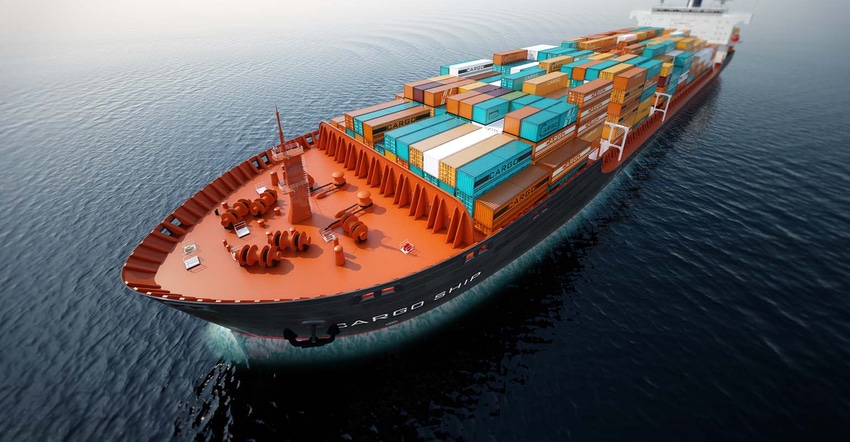
Since Donald Trump won the presidency, a lot of focus has been on manufacturing jobs and very little on food and ag trade. Agriculture has done quite well under current trade pacts, so farmers are rightly concerned about any changes to them. Trump shocked most farm commodity leaders earlier this week when he declared the U.S. would withdraw from NAFTA, then softened his stance at the eleventh hour. About 14 million U.S. jobs depend on trade with Mexico and Canada, according to the Chamber of Commerce.
Farmer-leaders were already nervous about Trump two months ago at the Commodity Classic. John Heisdorffer, an American Soybean Association board member, said the Trans-Pacific Partnership — which Trump rejected early in his administration — would have added 12 cents per bushel to the value of soybeans from increased exports.
Heisdorffer believes there can be a constructive dialogue with the administration on building exports for U.S. agriculture. This spring executive staff leaders from 11 major agricultural and agribusiness organizations saw that first when they met with some of Trump’s top trade advisers. One message they carried was that agriculture represents the single-largest U.S. manufacturing sector, representing 12% of all U.S. manufacturing jobs.
The groups said it was clear from the meeting that Trump understands the importance of current exports and the need to pursue expansion. There is no more important market than China, since roughly 30% of U.S. soybeans go there. Likewise, Mexico and Canada are among the top agricultural trading partners for U.S. farmers.
For agriculture, it will be important to maintain those customers and not create trade wars. “While we think there are some places we can improve NAFTA, we have to make sure we don’t take a step backwards in the renegotiating process,” Heisdorffer said.
Efforts likely will get underway this summer on a NAFTA rewrite as the administration further clarifies key goals within NAFTA. Then again, this is how Donald Trump does business. He initially threatens to pull out of the status quo arrangement, then with that threat hanging over negotiations, he tries for a better deal. Except in this case he’s playing with farmers’ livelihoods.
Heed the fundamentals
Save a draconian change in NAFTA, one could argue that fundamentals will outweigh any policy twist coming out of the White House. Here’s a few to watch:
When the dollar weakens, it boosts our ability to export, and vice versa. The dollar is expected to stabilize over the next decade. As a result, U.S. ag exports are expected to strengthen even as global demand rises when and if economies rebound says Jason Hafemeister, Associate Administrator at USDA’s Foreign Agricultural Service in Washington, D.C.
Crop prices are expected to remain above pre-2007 levels. “We are expecting some rebound in commodity prices, but not back to the food price spike peak, maybe more like the levels they were in the early 2000s,” Hafemeister says.
The World Trade Organization has been the center focus of trade policy. But WTO works on a consensus basis where any one country can block an agreement; as a result, we haven’t reached an important WTO agreement since 1995. So, while WTO stalls, countries turn to FTAs (Free Trade Agreements) for market access. According to FAS, the U.S. enjoys 40% market share with countries where we have an FTA, but only 11% market share with countries where we have no trade agreement.
The U.S. is the world’s leading ag exporter. The European Union is number two, and the contrast between them is big. Our exports are dominated by commodities while the Europeans sell mostly value-added and branded consumer goods. They export their dairy and pork through high-end fancy cheeses and labeled hams, for example.
Agriculture in most countries is politically sensitive and prone to artificial trade barriers. The EU is famous for this. “We’ve made a lot of progress on tariffs, but protectionism doesn’t sleep,” says Hafemeister. To fight bogus claims, our first option is to negotiate some accommodation, because going to court takes forever and may not accomplish anything. We lost all these markets to BSE 10 years ago when we had that one cow in Washington with the disease, but now we’re back in with almost all those countries. We did that by slowly grinding away in negotiations. Litigation is the last option.
The question still remains how Trump will help – or hurt – U.S. ag trade.
When I asked Hafemeister if FAS could use Trump’s negotiating advice, his answer was sly but diplomatic: “We welcome any advice he might have to improve our performance.”
About the Author(s)
You May Also Like






